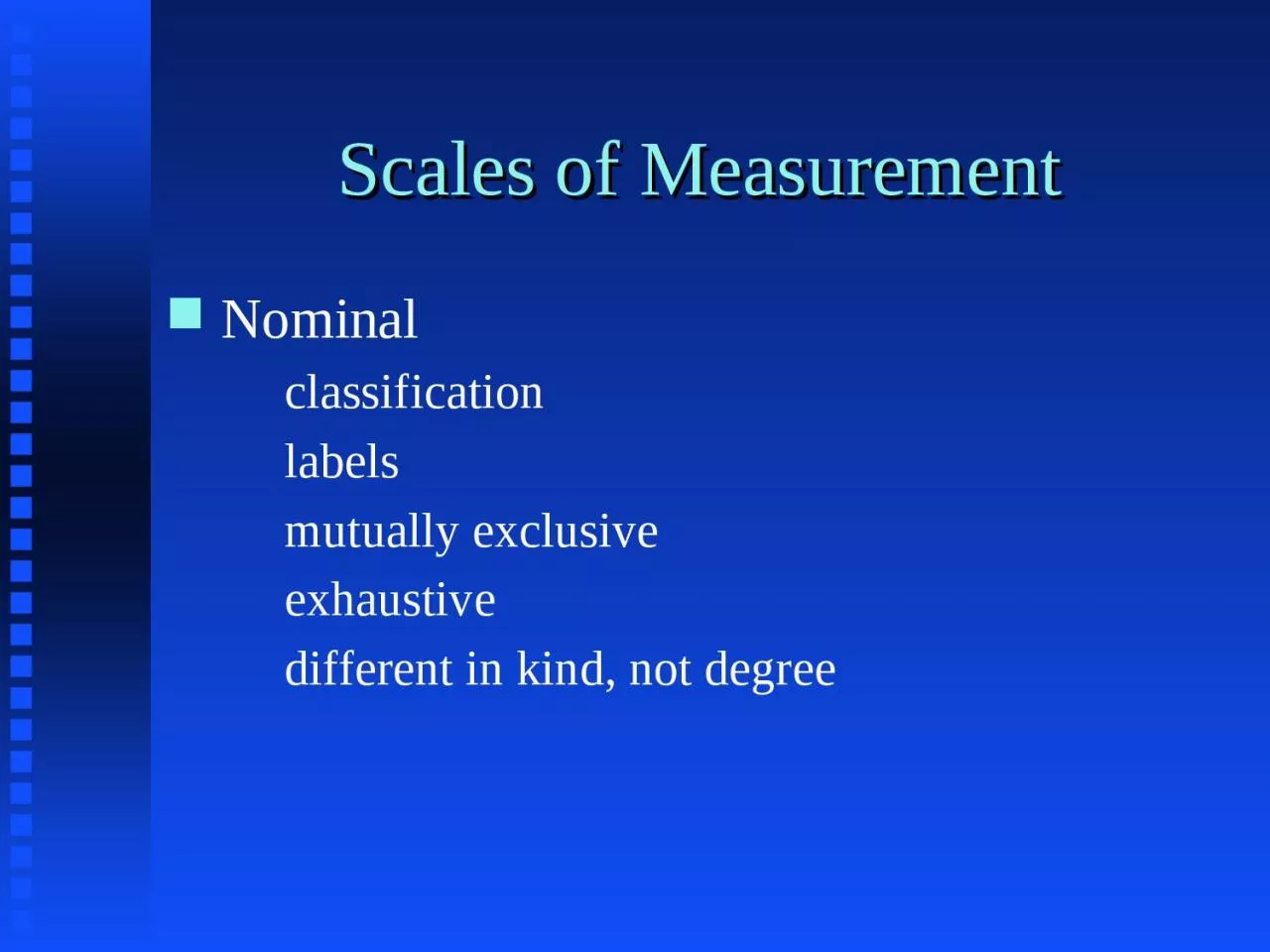

classification labels mutually exclusive exhaustive different in kind not degree Scales of Measurement Ordinal rank ordering numbers reflect greater than only intraindividual hierarchies ID: 1031150
Download Presentation The PPT/PDF document "Scales of Measurement Nominal" is the property of its rightful owner. Permission is granted to download and print the materials on this web site for personal, non-commercial use only, and to display it on your personal computer provided you do not modify the materials and that you retain all copyright notices contained in the materials. By downloading content from our website, you accept the terms of this agreement.
1. Scales of MeasurementNominal classification labels mutually exclusive exhaustive different in kind, not degree
2. Scales of MeasurementOrdinal rank ordering numbers reflect “greater than” only intraindividual hierarchies NOT interindividual comparisons
3. Scales of MeasurementInterval equal units on scale scale is arbitrary no 0 point meaningful differences between scores
4. Scales of MeasurementRatio true 0 can be determined
5. Contributions of each scaleNominalcreates the groupOrdinalcreates rank (place) in groupIntervalrelative place in groupRatiocomparative relationship
6. Project question #22. Which scale is used for your measure? Is it appropriate? – why or why not? Are there alternate scales that could be used to represent the data from your scale? If so how?
7. Graphing dataX Axis horizontal abscissa independent variable
8. Y Axis vertical ordinate dependent variable
9. Types of GraphsBar graph qualitative or quantitative data nominal or ordinal scales categories on x axis, frequencies on y discrete variables not continuous not joined
10. Bar Graph
11. Types of GraphsHistogram quantitative data continuous (interval or ratio) scales
12. Histogram
13. Types of GraphsFrequency polygon quantitative data continuous scales based on histogram data use midpoint of range for interval lines joined
14. Frequency Polygon
15.
16. Project question #33. What sort of graph(s) would you use to display the data from your measure? Why would you use that one?
17. Interpreting Scores
18. Measures of Central TendencyMeanMedianMode
19. Measures of VariabilityRangeStandard Deviation
20. Effect of standard deviation
21. Assumptions of Normal Distribution(Gaussian)The underlying variable is continuousThe range of values is unboundedThe distribution is symmetricalThe distribution is unimodalMay be defined entirely by the mean and standard deviation
22. Normal Distribution
23. Terms of distributionsKurtosisModalSkewedness
24. Skewed distributions
25. Linear transformationsExpresses raw score in different unitstakes into account more informationallows comparisons between tests
26. Linear transformationsStandard Deviations + or - 1 to 3z score 0 = mean, - 1 sd = -1 z, 1 sd = 1 zT scoresremoves negativesremoves fractions0 z = 50 T
27. ExampleT = (z x 10) + 50If z = 1.3T = (1.3 x 10) +50= 63
28. ExampleT = (z x 10) + 50If z = -1.9T = (-1.9 x 10) +50= 31
29. Linear Transformations
30. Examples of linear transformations
31.